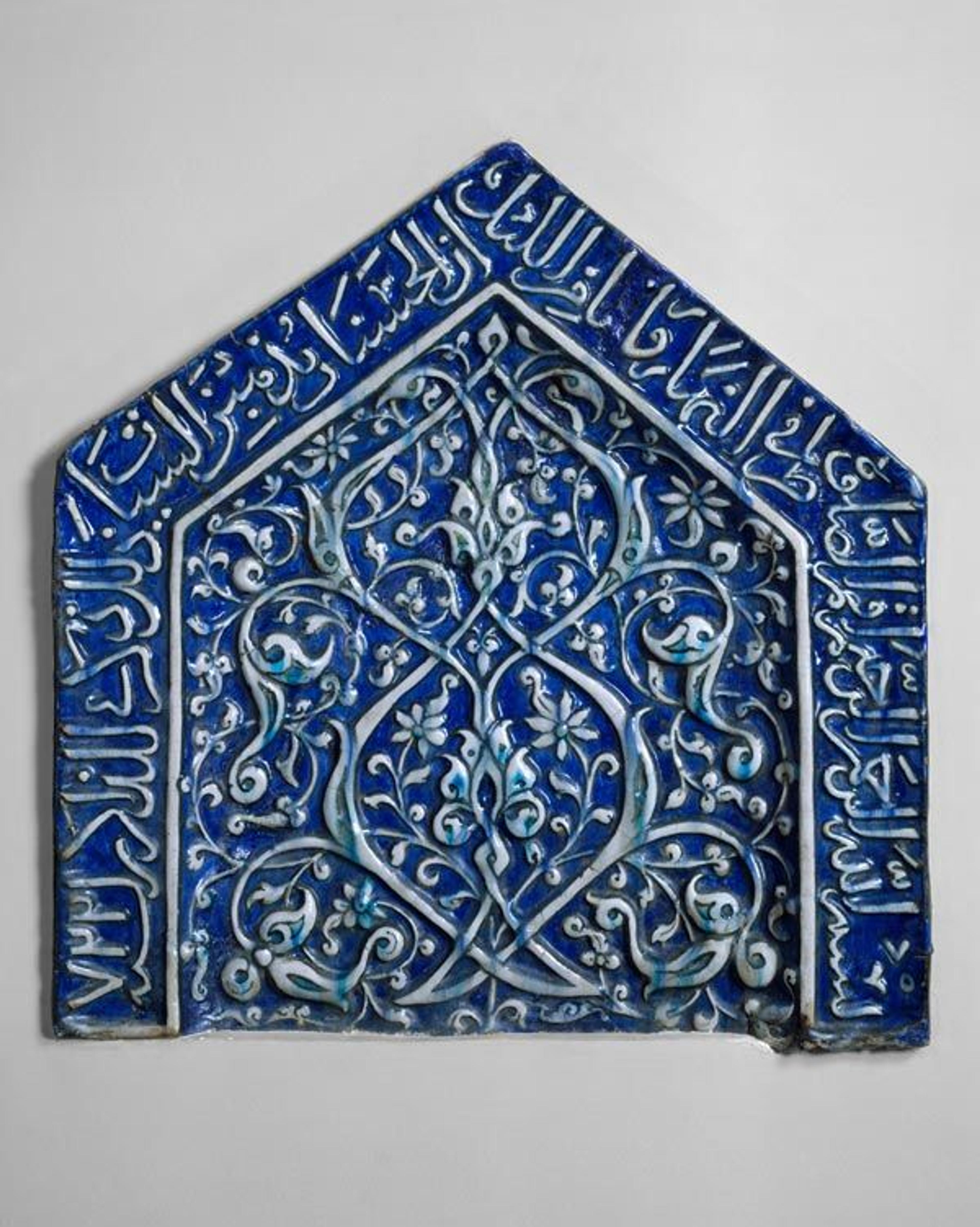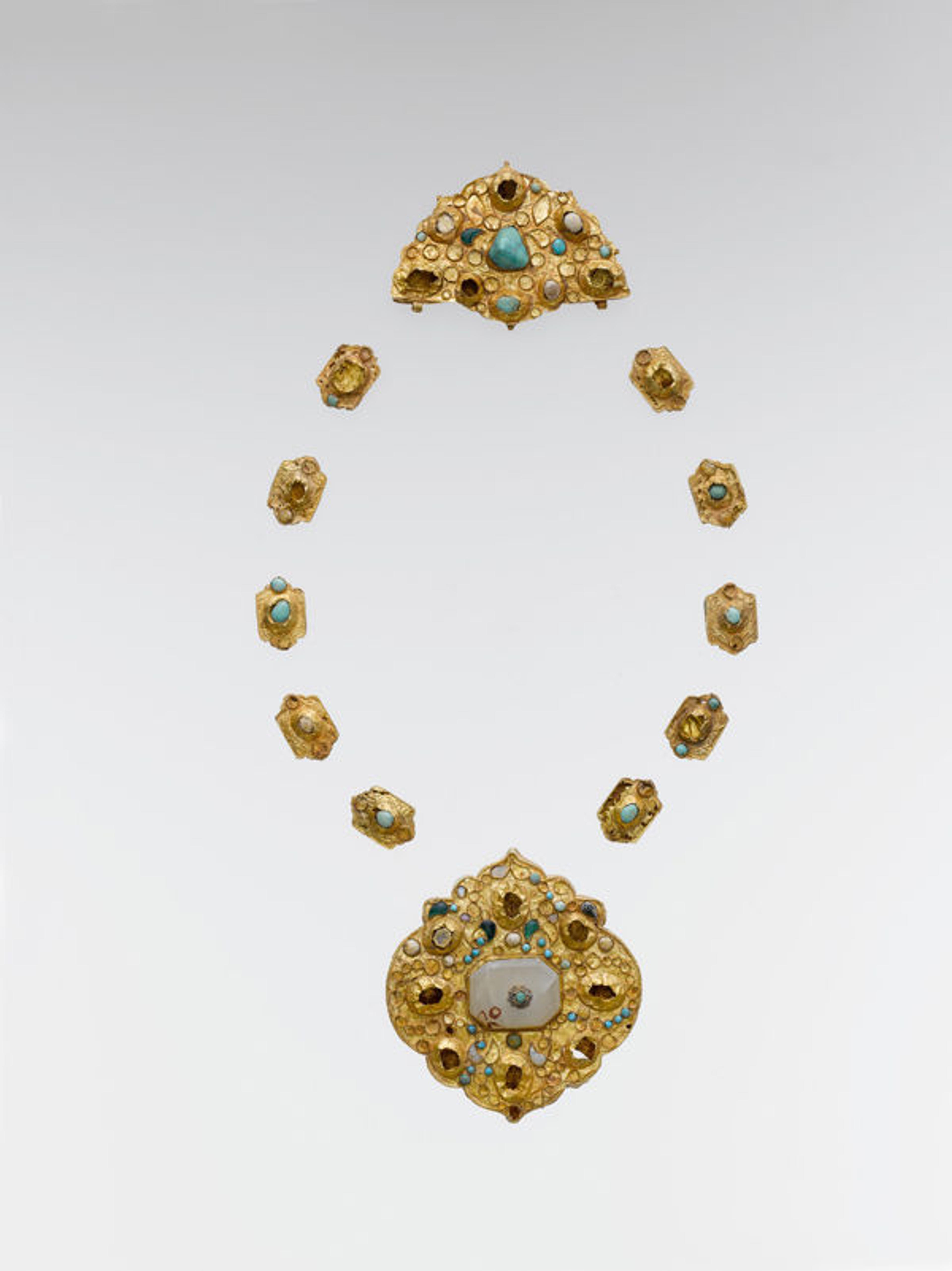Art Conquers Islamophobia

Mihrab Tile, dated A.H. 722/A.D. 1322–23. Iran. Islamic. Stonepaste; modeled, painted under transparent glaze; H. 27 3/8 in. (69.5 cm) W. 26 in. (66 cm) Wt. 74 lbs. (33.6 kg). The Metropolitan Museum of Art, New York, Gift of William Mandel, 1983 (1983.345)
«In celebration of the 2015 Scholastic Art & Writing Awards exhibition, now on view in the Ruth and Harold D. Uris Center for Education, the Teen Blog will feature guest posts by Scholastic Gold Key Award writers from New York City through the close of the exhibition on May 17. This week's blogger, Ayesha, was awarded a Gold Key for her personal essay/memoir, "The White Light."»
As a Muslim living in a post-9/11 world, I've gotten used to the way people treat me because of Islamophobia. I read about violent hate crimes in the news, and I shake my head sadly. I hear inaccurate assumptions made by Fox News reporters, and I roll my eyes. So, when Islam is portrayed in a positive light, I am always suddenly taken aback in delight—just as I was at the Met's stunningly beautiful Islamic Art galleries.
I actually entered the galleries unintentionally. I had been quietly observing landscape painting after landscape painting, while tilting my head with my hands folded behind my back like everyone else, but as I moved to the next room, I found myself below geometric-patterned ceilings, swinging golden lanterns, and blue-textile calligraphy. Awed, I floated through intricately carved wooden doorways and vibrant examples of ancient jewelry, and I was entranced by how many artifacts were preserved and how astonishing the entire collection was. I felt as if I was transported back in time to the ancient Middle East, and I loved every second of it.

Folio from a Qur'an Manuscript, ca. 1180. Eastern Iran or present-day Afghanistan. Islamic. Ink, opaque watercolor, and gold on paper; 11 3/4 x 8 3/4 in. (29.8 x 22.2 cm). The Metropolitan Museum of Art, New York, H. O. Havemeyer Collection, Gift of Horace Havemeyer, 1929 (29.160.25)
The Met's Islamic Art galleries give me hope that not everyone views Muslims as hateful, crazy extremists. The collection truly shines a light on the artistic genius that must have existed—and continues to exist—in the Arab world.
It's important to realize how human and engaging art is. The political situation between the Western world and the Middle East is sticky and difficult right now, and it's hard for people on both sides to understand each other. Yet how easily does art manage to humanize a group of foreign peoples and allow us to connect with people from distant lands?
I hope Muslims like me can fully integrate into society and not have our commitment to America questioned. I hope the Western world continues to negotiate toward peace with the Middle Eastern region, and if the back-and-forth gridlock of politics doesn't work, maybe it's time to use art.

Jewelry Elements, late 14th–16th century. Iran or Central Asia. Islamic. Gold sheet; worked, chased, and set with turquoise, gray chalcedony, and glass; Large medallion: H. 2 7/8 in. (7.3 cm) W. 2 3/4 in. (7 cm) Half medallion: H. 1 3/4 in. (4.4 cm) W. 2 3/4 in. (7 cm) Cartouches: H. 3/4 in. (1.9 cm) W. 1/2 in. (1.3 cm). The Metropolitan Museum of Art, New York, Purchase, Rogers Fund and Habib Anavian Gift, 1989 (1989.87a–l)
For more teen writing, please visit the exhibition in the Uris Center for Education!
Ayesha undefined
Ayesha is a guest blogger for the teen blog. Her work is currently on view in the Scholastic Art & Writing Awards exhibition (March 16–May 17, 2015).